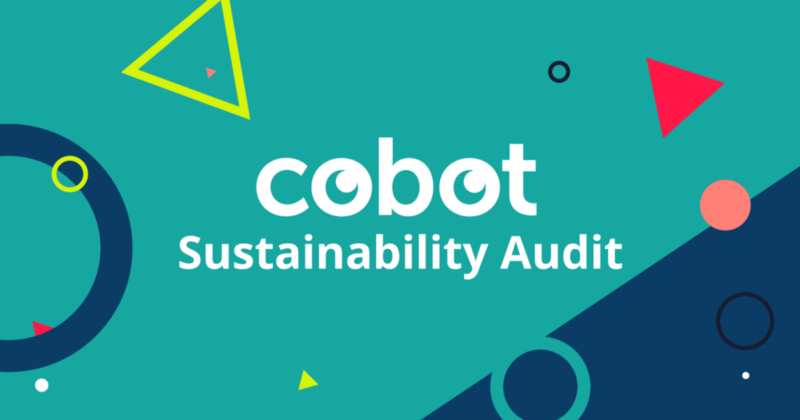As a part of our series on coworking and the climate, we thought it would be a good time to take a look at our own environmental impact. How do we stack up and how can we do better?
A few ground rules: all of these are estimates made by myself, and as such aren’t meant to represent a truly comprehensive or accurate study. I’ve tried to find sources that get as close as possible to our situation in Berlin, Germany, but sometimes I used estimates from other countries in similar regions/situations. I’ve also converted everything into metric. If carbon was offset, I’ve made a note of what was offset and not counted it against our total. For all calculations I use CO2e measurements, which is a way of talking about emissions via the most well-known greenhouse gas.
At the bottom of this article you can find resources for calculating your space’s environmental impact and becoming more sustainable.
Energy Sourcing
In Germany, consumers have a say in their choice of energy provider, and we’re no exception. At Cobot, we get our electricity through a company called LichtBlick, a 100% renewable energy company.
It’s important to note that not all carbon-neutral sources are environmentally friendly. LichtBlick uses hydroelectric power, which has often been deleterious to aquatic environments. Accroding to their materials, they take every measure available to avoid nevative effects, but as with all hydroelectric power it’s important to dive into the details. After reading their materials and certifications we are confident that their review process takes into account their overall environmental impact.
Noting the potential external environmental costs, for all of our electricity needs, I’m marking down 0 kg CO2e.
Commuting
All of the Cobot employees took a survey about their usual transit methods. Using estimates based on the the time spend per day per type of commuting method, I averaged out some numbers about our carbon output.
We have a few distinct advantages here at Cobot. We’re located in the heart of Berlin, where you can find many different public transportation options. Most of our employees live within an easy walking distance of the office and do so daily. Many others ride their bike (usually less than 15 minutes). A few use public transportation (all in under 45 minute rides). None of Cobot’s employees commute using personal motor vehicles.
If you want to see your personal impact, you can use this tool to calcultate your personal daily and annual carbon emissions from commuting.
With that said, based on our commuting habits we produce roughly 2510 kg CO2e annually.
Hardware
As a tech company, we often purchase and use high-end computers and manufactured electronic goods. I did a survey of our team’s computers and the rate of replacement computers, then used the Apple and Microsoft environmental estimates to give our team an annual number based on those factors. This measurement takes into account raw materials, manufacturing, and transportation carbon emissions.
Using our estimated rate of replacement (1 new device per employee per year), I put our annual emmissions from hardware purchases at 2411 kg CO2e.
Hosting
We use Amazon AWS for our services’ hosting. Based on our region and the regions of our servers, it is likely that most if not all of the energy is renewable. Caveat: Amazon claims that five of their regions are carbon neutral, but provide a very low level of transparency.
Cloud-based servers, in general, are more efficient than locally-hosted servers, but as more storage is moved to the cloud many of these facilities continue to be powered by carbon-intense sources such as coal. I’m marking this one down as neutral, with the caveat that Amazon should be more transparent with their numbers: 0 kg CO2e.
Consumption
An area in which we have some habits that push us further away from being sustainable. We keep a normal supply of chocolate (1 bar daily), milk (1–2 liters per week), coffee (1 bag per week), and a weekly fruit basket. Of those, I was unable to accurately estimate the CO2 cost of the basket, as it varies week-to-week, so my estimate leaves it out. This means that I am under-estimating the amount we contribute here, and many baskets contain non-local produce such as avocados in addition to local produce, which surely result in increased carbon costs.
Based on those imperfect estimates, our total for work-supported consumption comes out to 651 kg CO2e.
Air Travel
We travel a lot at Cobot. Much of our business is international and we love spending time visiting our spaces around the world. But we also understand the two facts that face us:
- This habit is incredibly damaging to the environment.
- We need to do what we can to reduce and eliminate our travel and impact.
Any flights we book for work purposes are offset through myclimate, a Swiss non-profit that we highly recommend. We have a policy that we don’t fly within Germany and we make every effort to fly less and use direct flights wherever possible.
After calculating our total travel emissions per Cobot passenger using the International Civil Aviation Organization (ICAO) emission calculator, I came to a total of 12,942.2 kg CO2e. Spoiler alert: this is more than double our complete total, and a very difficult number to recon with. However, since we purchased offsets, for the purposes of this exercise, I’m marking this section as 0 kg CO2e.
Final Tally
Adding up all of the items, I came to a number based on my (non-scientific) analysis:
5572 kg CO2e (6.4 US tons) per year
Takeaways
After this exercise, I was happy to see that in terms of our actions, Cobot’s general work life is very sustainable. It is only in terms of our travel that we “break the bank” and exceed sustainable habits. But we can’t take all the credit. Many of our good habits are a direct result of good urban policy that makes it affordable, safe, and (usually) easy to commute using sustainable methods. If we were located in the US our habits would be different out of necessity. This highlights the importance that clean infrastructure has in determining an organization’s sustainability, and the need to improve our “clean” infrastructure to minimize our emissions globally.
What you can do
There are many ways to replicate this excercise, even if you can’t afford a full-scale environmental audit. I’ve found one particularly detailed website that provides a spreadsheet you can use to estimate everything down to your employees home electricity use during home office (something I didn’t bother trying to estimate). But really, getting involved and making changes is more important than measuring your environmental impact. You probably already know what you can do, it’s just a matter of standing up and saying that you won’t wait anymore.
And back to the point I made in the last section, one of the best things you can do is push for increased transportation options and reducing your region’s reliance on car travel and carbon-intense electricity. It’s not glamorous, but these are major ways in which your community can become more sustainable. The bonus of these is that each step helps make not just your space and your habits more sustainable, but everyone else’s too. No individual can make a significant dent in our carbon production, but communities and political action can make all the difference.



